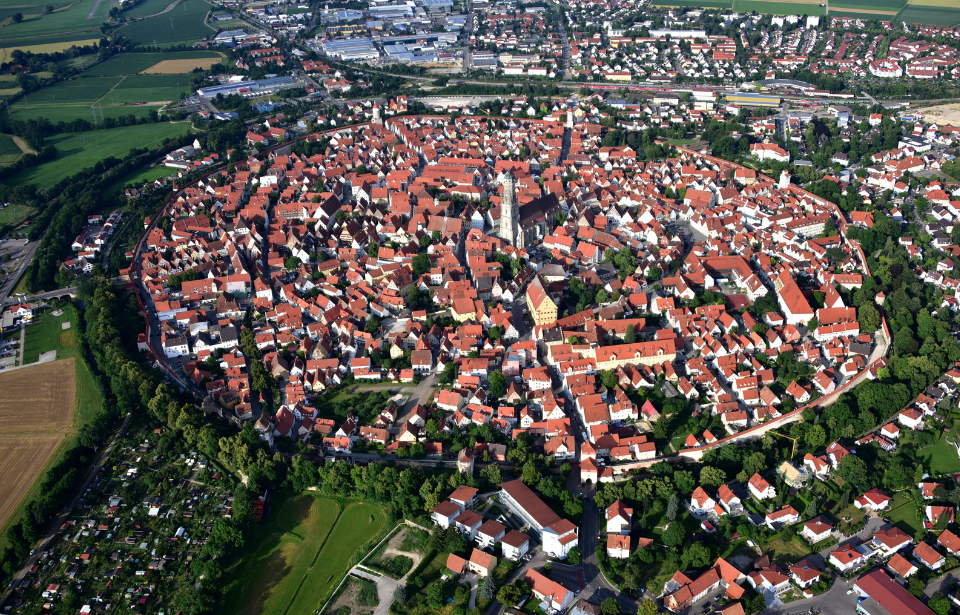Nördlingen, located between Stuttgart and Munich in Germany, is one of the country’s most historic towns and its original city walls are still intact. It also boasts the unique feature of being constructed within a meteorite crater. With a population of just over 20,600, Nördlingen is a rather small town. However, its interesting location, rare building construction, and war-filled history make it a hotspot for tourists from all around the world.
A meteorite hit the earth, making a massive crater
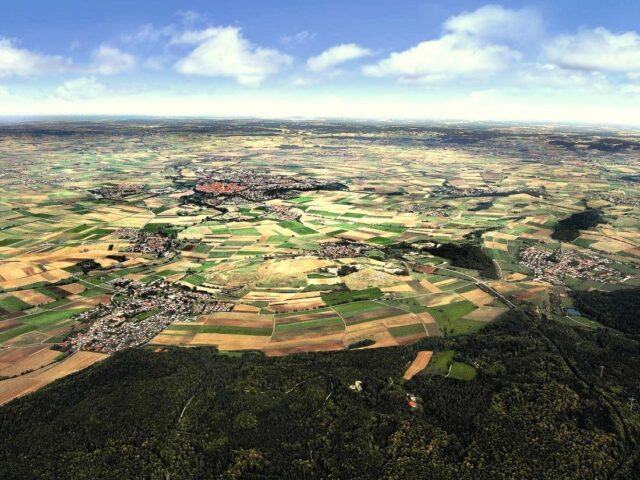
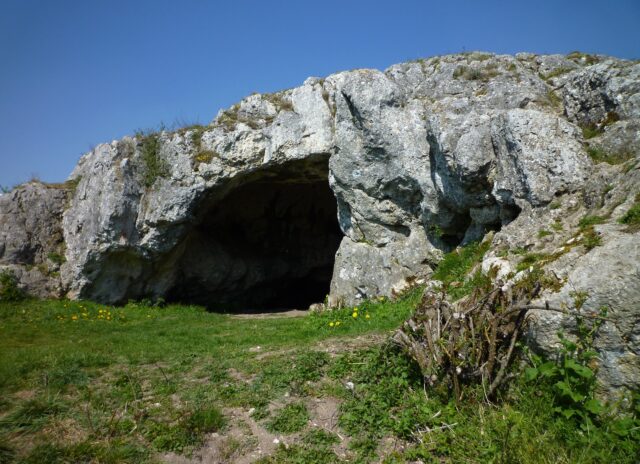
About 15 million years ago, a meteorite entered the Earth’s atmosphere and impacted its surface. It was estimated to have been about only one km in width, but hitting the earth at about 70,000 km per hour created a crater approximately 25 km in diameter. This crater came to be known as the Nördlinger Ries, now one of the most studied in the world, even serving as the location for training before the Apollo 14 mission that took place in 1971.
Excavations of the Ofnet Caves, located on the edge of the Nördlinger Ries, showed that during the Palaeolithic period, people inhabited the area. Also discovered during excavations was a Roman villa in the district of Holheim. This coincides with the understanding that the Roman province of Raetia included present-day Nördlingen. Another settlement, believed to have been built in 85 AD, was located in the southern part of the city and is thought to have been inhabited up until 259-260 AD. The settlement was eventually destroyed by the Alemanni tribes during their conquest of the area.
Although there were other inhabitants in the region, it was within the Nördlinger Ries that the city of Nördlingen was built. The first ever recorded history of the city of Nördlingen dates to the year 898 AD, which the townspeople celebrate as its year of foundation. The city was built just five kilometers from the crater’s center, and when it was built, the citizens were likely entirely unaware that they were settling in the middle of a massive cavity.
The city is rich in tiny diamonds
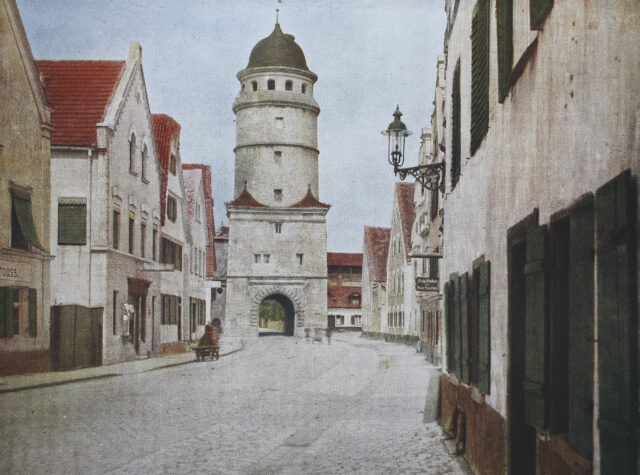
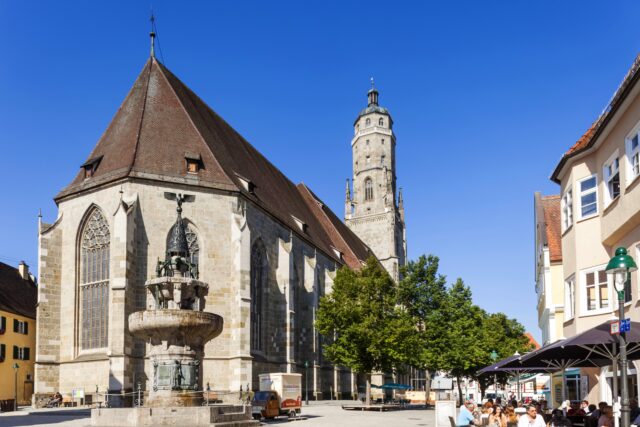
One of the strange occurrences that happened after the meteorite made impact with the Earth’s surface was the creation of millions of tiny diamonds. As the meteor landed on a graphite deposit, its force produced an estimated 72,000 tons of micro-diamonds. However, that is exactly what they are – micro-diamonds. They only measure less than 0.2 millimeters across, so they are not the kind to be mined for jewelry or other uses. Instead, stones from the deposit containing the diamonds were unknowingly quarried and used in the construction of buildings in the city. These buildings now dazzle and sparkle from the glint of thousands of these tiny diamonds still inside the stones.
A prominent attraction of Nördlingen is St. George’s Church, which was built between 1427 and 1505. What draws so many tourists to the city is the chapel’s 90-meter tower, which has been nicknamed “Daniel.” At the top of the tower is a spire that was made out of stone containing shocked quartz. Shocked quartz is formed due to extremely high pressure caused by meteorite impact, meaning that the spire is yet another product of the crater.
Nördlingen became an important trading town
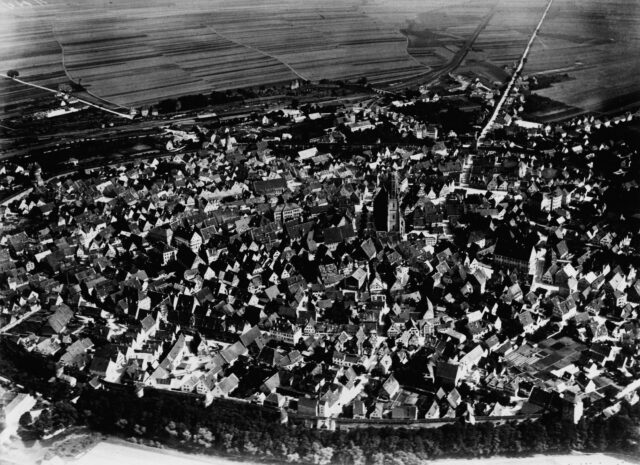
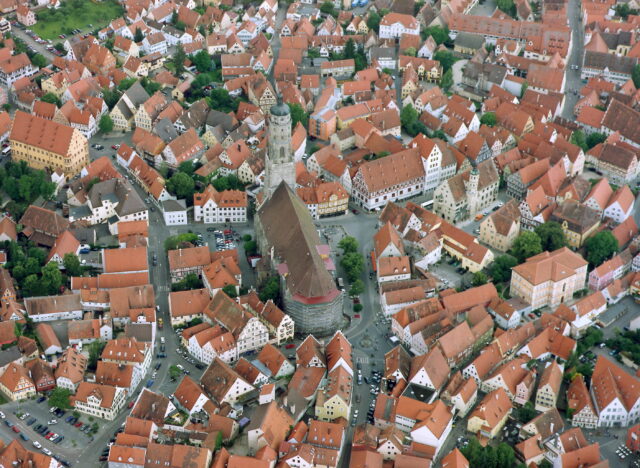
The Alemannic people who conquered the area remained there throughout the 6th and 7th centuries. During this time, the people were slowly Christianized as part of the Merovingian dynasty. However, by 1215, Emperor Frederick II granted the city its rights, making it an official part of the Holy Roman Empire. In that same year, Nördlingen saw the construction of its first city walls.
It was also during this time the city became an important site for trading, especially in the exchange of grains, textiles, furs, livestock, and metal goods. Unfortunately, in 1238, Nördlingen was significantly destroyed as a result of a fire. However, recovery didn’t take long, and by 1327, a second wall perimeter was built around the city, increasing its original size four times over.
Nördlingen was the site of important battles in the Thirty Years’ War
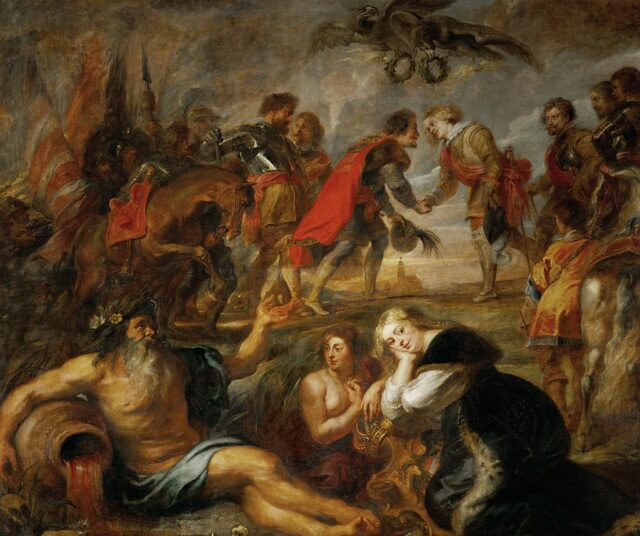
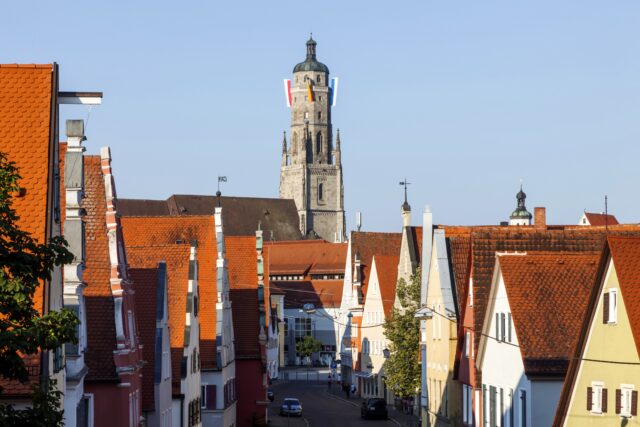
The city of Nördlingen was also the site of two very important battles that took place during the Thirty Years’ War (1618-1648). The first was called the Battle of Nördlingen and was fought in 1634. The city was severely plundered and it lost more than half of its population. A second Battle of Nördlingen occurred in 1645. This battle also caused major losses to the people and it was not until 1939 that the city was able to regain the population it had prior to the Thirty Years’ War.
More from us: Tomnadashan Mine Was Used in ‘Monty Python and the Holy Grail’
Later on, during the early 18th century, Nördlingen was deeply affected by battles that took place during the War of the Spanish Succession. As a result of the conflict, the city lost its status as an important trading center. Nördlingen lost its status as a city on July 1, 1972. It is now the administrative center of the Donau-Ries area as well as a desirable place for visitors to take walking tours.
